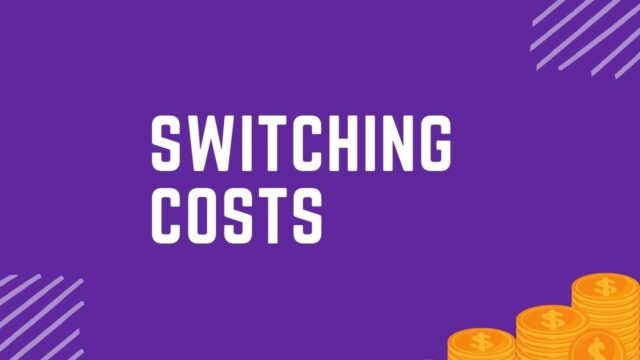
What are switching costs and why are they important
Switching costs are the costs associated with switching from one product or service to another. They can be financial, time-consuming, or emotional. For example, if you switch from one cell phone provider to another, you may have to pay a fee to cancel your service. Or, if you switch from one type of car to another, you may have to sell your old car at a loss. It can also be emotional; for example, if you’re loyal to a particular brand, you may be reluctant to switch to a new one. Regardless of their nature, switching costs can significant barriers to entry for new products and services.
That’s why it’s important for businesses to understand what their customers’ are. If they can find ways to reduce those costs, they’ll make it easier for their customers to try new things. And that can lead to more sales and more loyalty in the long run.
How can companies reduce or eliminate switching costs
One way to reduce switching costs is to offer incentives for customers who make the switch. This could include discounts, freebies, or other promotional offers. Another way to reduce switching costs is to make the process of switching service providers as easy and seamless as possible. This might involve providing detailed instructions, offering customer support, or waiving certain fees. By taking steps to reduce switching costs, companies can make it easier for consumers to try their products or services and stay loyal customers in the long run.
What strategies can be used to overcome switching costs
When customers switch brands, they incur what economists call switching costs. These are the costs of learning about a new product, of training employees to use it, and of becoming accustomed to its features. For businesses, overcoming switching costs can be a challenge, but there are several strategies that can be used to make the transition smoother. One common tactic is to offer free trials or demo versions of the new product.
This allows potential customers to try out the product and get a feel for how it works before making a commitment. Another strategy is to offer discounts or other incentives to customers who make the switch. This can offset the added cost of learning about and implementing the new product. Finally, businesses can provide support and training to help customers transition to the new product. By taking these steps, businesses can overcome the barriers posed by switching costs and attract new customers.
Examples of how switching costs have been used in the past
There are numerous examples of businesses using switching costs to their advantage. In the mobile phone industry, for example, customers are often locked into long-term contracts with high early termination fees. This makes it very expensive and difficult for customers to switch to a competing service, even if they are unhappy with their current provider. Another common example is software that uses proprietary formats that cannot be read by competitors’ products. This makes it difficult for customers to switch to a different product, even if they are dissatisfied with the one they are using. By understanding how switching costs can be used to their advantage, businesses can effectively lock in their customer base and protect their market share.
The benefits of reducing or eliminating switching costs
Reducing or eliminating switching costs can have a number of benefits for businesses. First, it can make it easier for customers to try out new products or services. This can lead to increased sales and market share for the business. Second, it can help to build customer loyalty, as customers are less likely to switch to a competitor if there are no switching costs involved.
Finally, eliminating switching costs can also help to create a level playing field for businesses, as small businesses with fewer resources are more likely to be able to compete against larger businesses that may have an advantage when it comes to marketing and advertising budget s. Reducing or eliminating switching costs can therefore create a more competitive and dynamic marketplace.
Conclusion
Switching costs can be a major barrier to entry for new businesses. They are the costs associated with changing from one product or service to another. It can include both financial and non-financial costs. Financial costs can include things like cancellation fees, while non-financial costs can include the hassle of learning how to use a new product or service.
They are often high because businesses want to discourage their customers from switching to a competitor. As a result, businesses will often offer incentives, such as discounts or loyalty programs, to try to keep their customers from switching. It can be a major barrier to entry for new businesses, but they can also provide an important competitive advantage for incumbent businesses.


































